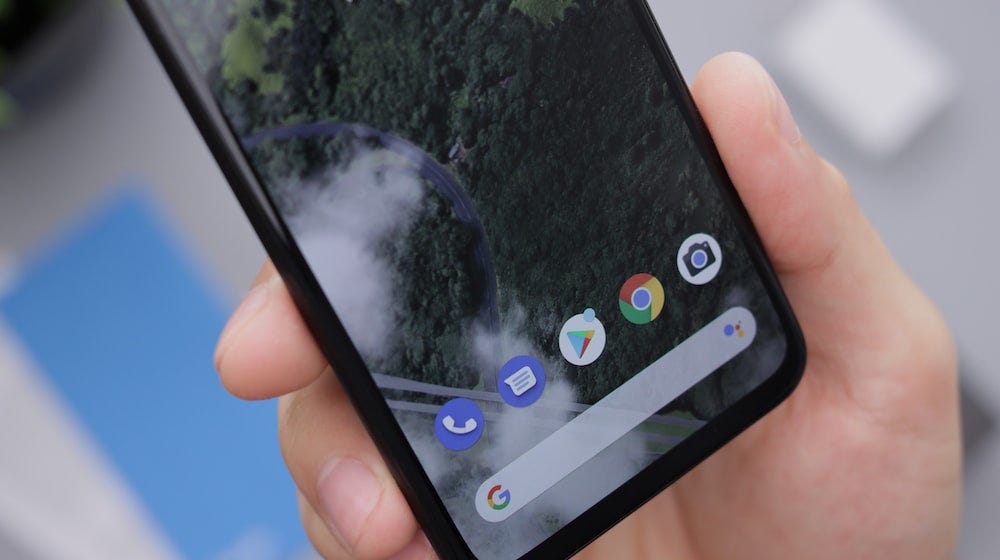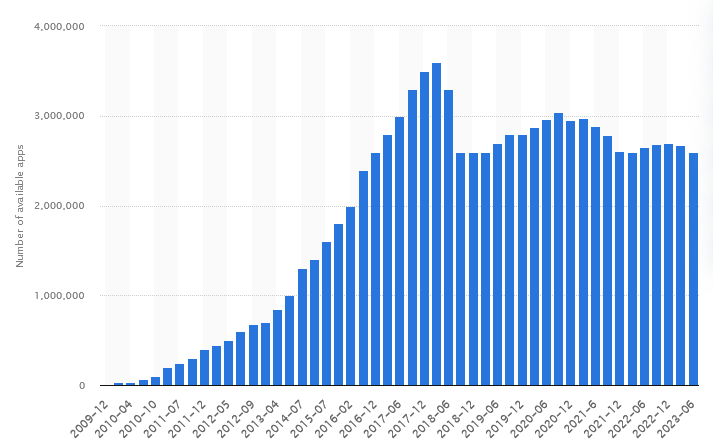Android app development is a vital and active part of the mobile app business, not just one aspect of the digital world. Understanding the importance of the Android platform, its lengthy history, and its changing influence on our mobile experiences is necessary to fully comprehend its richness. And you can design a simple Android app for less than $3,000!
A Brief Overview of Android
Across the world, the Android operating system has become the lifeblood of over 2.5 billion smartphones. These gadgets include TVs, wearables, and even Internet of Things (IoT) devices. Not just the smartphones and tablets that we usually identify with Android. The platform's wide reach may be ascribed to its open-source nature, which has enabled developers to create and modify the system to suit different needs and gadgets.
The Android Saga: A Brief History
The history of Android began when Andy Rubin established Android Inc. in the early 2000s. After seeing its potential, Google bought the business in 2005. This calculated action cleared the path for the modern Android. Google unveiled the Android Market in 2008; it would eventually develop into Google Play, the main platform for the distribution of Android apps.
Android's popularity may be ascribed to its open-source ethos, rendering it a preferred choice for developers and device makers. Because of this open environment, developers are able to experiment with the code, which promotes a dynamic and varied app market. The number of available apps in the Google Play Store was most recently placed at 2.59 million apps, after surpassing 1 million apps in July 2013.
The Android App Development Process: An Intricate Symphony
Creating an Android application is like arranging a difficult symphony: every stage is a note that matters in the arrangement.
1. Concept Generation: Everything starts with a concept, a creative spark that aims to entertain, solve a problem, or meet a particular need. This serves as the project's main support structure.
- Design: The idea is given life during the design stage. It entails drawing out wireframes, designing the user interface, and making sure that the visual appeal of the app is appropriate for the target user base. Here, aesthetics are a major factor.
3. Development: The coding procedure is the foundation of app development. This is the point at which the concept is turned into useful software. Expert developers make sure that every feature and function is in line with the original idea by working extremely carefully.
4. Testing: In a manufacturing process, quality control is similar to the testing phase. Here, programmers thoroughly test the application in an effort to find flaws and improve performance. Ensuring a flawless customer experience is essential.
5. Launch: The app is prepared to interact with its users after it has undergone extensive testing and refinement. The moment the software is made available to the general public via Google Play, the Apple software Store, or other distribution methods is an exciting one.
6. Maintenance: The life of an app doesn't end with the launch. Regular upkeep is essential. To keep the program current and dependable, this phase includes server administration, bug patches, security enhancements, and upgrades.
Embracing the Latest Trends in Android App Development
In order to remain competitive in the dynamic field of Android app development, developers need to adopt the most recent trends that are influencing the industry:
Augmented Reality (AR)
AR offers immersive experiences in gaming, education, and other fields by skillfully fusing digital and physical aspects. AR navigation apps and Pokémon GO are two well-known examples.
Internet of Things (IoT)
Users may operate wearable technology, smart homes, and other connected equipment by integrating IoT with apps. In daily life, this trend improves connection, automation, and convenience.
Machine Learning
App automation and personalization are being revolutionized by machine learning. Apps are capable of adapting, picking up on user behavior, and offering customized experiences --- from speech and text recognition to recommendation algorithms.
Chatbot Integration
Users' interactions with software are evolving as a result of chatbots being integrated into applications. These virtual assistants can increase user support and engagement while providing prompt replies.
Designing User-Friendly Android Apps: A Seamless Experience
Designing an Android app that draws consumers in and keeps them interested requires a thorough approach:
Intuitive User Interfaces (UI)
A well-designed user interface is essential for success. This entails keeping things simple, making sure the navigation is obvious, and assisting users in navigating the app's features with ease.
Optimizing Performance
Performance optimization is crucial in a world where consumers want apps to be responsive and fast. This includes responsive design concepts, effective resource management, and code optimization.
Smooth User Interaction
Users should have no trouble interacting with the software. It should always be clear to users where they are in the program and how to get where they want to go. It should be as natural to navigate as breathing.
Counting the Costs: Understanding the Financial Aspect of Android App Development
The cost of developing an Android app varies substantially, mostly depending on the complexity, functionality, and continuous maintenance of the app:
- Basic Apps: Developing simple, single-feature apps is sometimes less expensive. To-do lists, calculator applications, and specialized tools are a few examples of them.
- Mid-variety Apps: A specialized development team is needed for apps with a wider variety of functionality, refined design components, and more complicated features. This calls for a larger budgetary allotment.
- Complex Apps: Generally, the development expenses of complex apps, such as social networking platforms or e-commerce applications, are greater. More development time, sophisticated functionality, and elaborate UI/UX design are required due to the complexity.
- Maintenance: It's important to remember that sustaining an app comes with continuing expenses. This covers routine server maintenance, security patches, bug fixes, and upgrades.
Conclusion
In a technologically advanced world, developing apps offers a doorway to creativity, influence, and seemingly endless opportunities. Android app developers have the ability to produce solutions that attract audiences and stand as emblems of the digital era, from easing daily duties to offering enjoyment.
Keep in mind that every trip begins with a concept and that in order to succeed, developers need to keep up with the most recent trends, prioritize performance and user-friendliness, and manage their budget carefully. You have the ability to influence the digital environment and add to the always-changing fabric of technology and human experience as Android app developers. You may be the one to create the next revolutionary app, one that becomes widely recognized.


